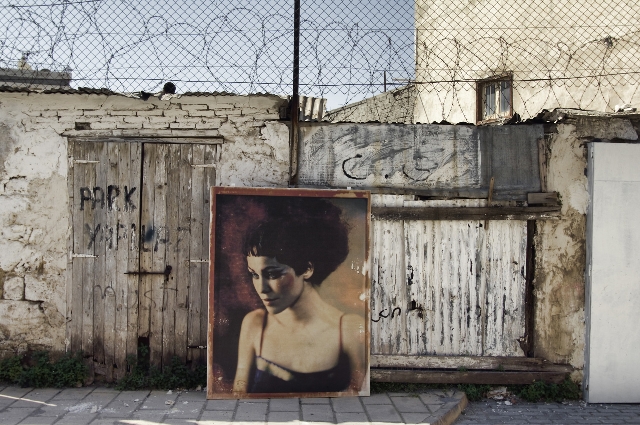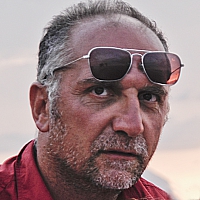
Carlo Bevilacqua
A photographic exhibition, a slideshow and a multimedia installation, to remember, at the Plaza 2009, International Contemporary Art Exhibition that celebrates the twentieth anniversary of the fall of Berlin Wall, the laceration of Cyprus and its capital, Nicosia last territory and last divided capital of Europe for almost forty by a real wall as well as a political division and military.
Photographs by Carlo Bevilacqua
Texts and voices of Saverio Paffumi, Denis Curti, Fabio Mario Santopietro
Installation NABA Scenography Lab Curated by Stefania Vaccari, Carlo Bevilacqua
November 9, 2009 mark the 20th anniversary of the fall of the Berlin Wall. Almost no one knows, however, that in Europe there is still one last “wall” that divides a capital and a state. Cyprus.
Cyprus, and especially its capital and largest city, Nicosia, is the last European area to be crossed by a ceasefire line that divides the Greek Cypriots and Turkish Cypriots. There is no longer danger or even tension anymore. Some checkpoints are now visited by tourists that may transit from north to south and vice versa without any major problems. Nicosia is a city with walls and is a city with “the wall”. The walls are Venetian of the16th century; “the wall” divides the Greek from Turkish, Lefkosa from Lefkosia.
The performance of the wall, remained standing in a European capital, is on stage every day. Workers, Turkish-Cypriots and tourists pass through the checkpoint of Ledra Street and Ledra Palace daily. At the checkpoint, they endure the annoying police formalities of passport control and the issuing of visas on a piece of paper stamped and signed with ottoman bureaucratic efficiency by the policeman.
But it is also this division that makes Nicosia so fascinating. It is an effect of a phenomenon that nobody has foreseen. Today, this almost-open line between the two communities creates a strange balance, a sort of limbo in which tourists are trying to sneak into emotions. The streets of neighborhoods near the United Nationals Green Line, the buffer zone dividing the island, are often interrupted by walls. The Greek side has the Balkan appearance of a bombed city, with palaces and houses in ruins and uninhabited, abandoned, with sandbags in the windows and balconies. Barricades of all kinds litter the streets: bins filled with stones, iron, old appliances and hulks of cars, erected to defend people that have disappeared from bullets that are no longer shot.
The areas adjacent to the sentry-boxes, on both sides, are industrial, with plenty of mechanics and manufactuers. Over the wall, there is the no man’s land, the phantom zone, , a buffer zone controlled by UN where old palaces fall to pieces and trees thrive in what were once bedrooms or dining halls. Beside this, yet another Nicosia, the northern part, the Turkish Republic of Northern Cyprus, recognized only by Turkey. In the streets, there is the same liveliness of Greek Nicosia. Near the wall, depression from the same semi-abandonment, the same manufactuers, the same workshops. Here is the same atmosphere, only the colors of the wall have changed. Here are the flags of the Turkish mezzelune, sometimes less than a hundred meters away from the Greek. Until the 1960s there was only one historical center; now, there are two, side-by-side. But the division of the island, with land, property and houses displaced, has affected both parties. And this is probably one of the major obstacles to reconciliation. Who will come claim their property when it has been confiscated, demolished, extended or re-sold several times? Even the large military base of the English, perhaps too close to the Middle East powder keg, with its cargo of terrorism and fundamentalism, is rumored to be planning to leave soon, in anticipation of resolution in Cyprus.
However, following the historical path, below and beyond the Green Line, perhaps you can read a more optimistic future. The two municipalities have initiated a joint project of rehabilitation of historic sites with the main support of the European Union and the UN. A signal of a future reconciliation? Along the zone of division, the real line does not separate Greek and Turkish, but neglect and rebirth, places lost and places found. This is perhaps the most important wall to be removed. The barricades and trenches of the Green Line, despite their threatening appearance, are becoming a memory of the warning not to go back — either in Cyprus or elsewhere.
— Text by Saverio Paffumi

